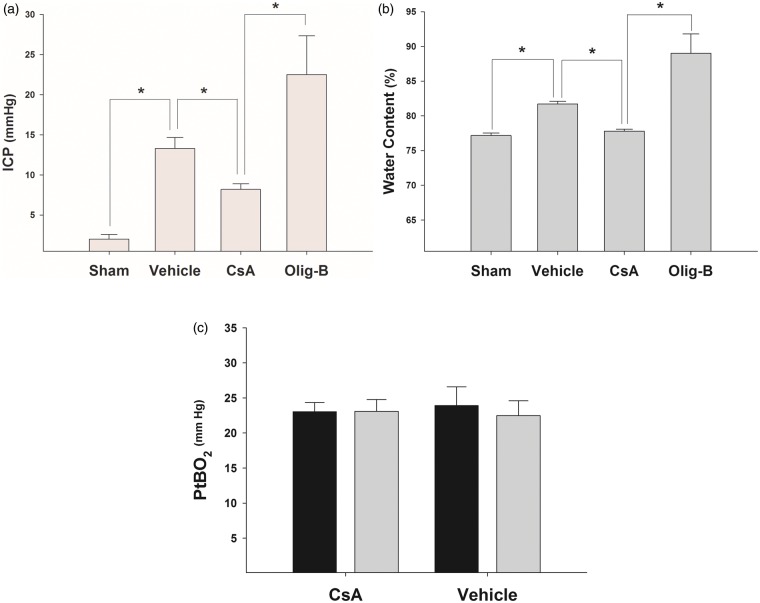Figure 2.
(a) In comparison with sham-operated animals, injured rats suffered from significantly higher levels of ICP. Treatment with CsA an OligB resulted in opposite effects with a significant ICP reduction and further but non-significant ICP elevation, respectively. *: P < 0.05 Tukey-Kramer pair wise multiple groups comparison. Bars represent mean ICP values with standard errors. (b) Expectedly, analysis of water content in the different groups showed results closely similar to that found with ICP with comparable trends for cerebral edema observed with treatment with CsA and OligB. *: P < 0.05 Tukey-Kramer pair wise multiple groups comparison. Bars represent mean values of water content with standard errors. (c) Although injury resulted in brain edema and ICP increase, there was no evidence of reduced value of brain oxygenation that could be indicative of cerebral ischemia induced by elevation of cerebral peripheral vascular resistance. Accordingly, mitochondrial functional alteration could not be attributed to compromised oxygen delivery. As shown, normal PtbO2 values (>20 mm Hg) could be found in both injured (black bars) and non-injured (gray bars) cerebral hemispheres as well as in vehicle and CsA-treated animals with no difference.
Bars represent mean values of water content with standard errors.

